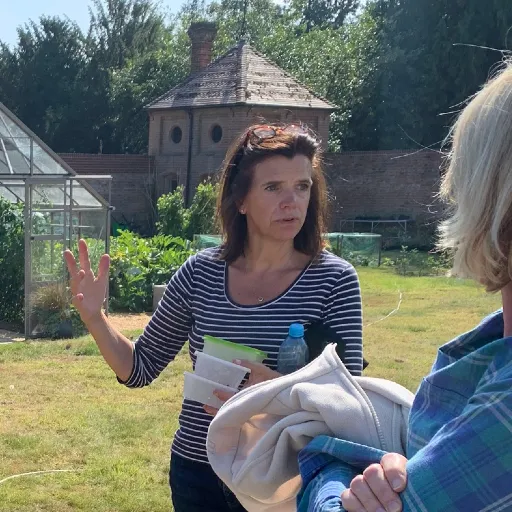Request a Brochure

By the time you read this we may be experiencing a brief Indian summer, but much of the past week has felt positively autumnal with a chill in the air. In the Walled Garden the main impact of the change in temperature has been a dramatic deceleration in ripening. A week ago we were harvesting courgettes, cucumbers and tomatoes from the Rhino Greenhouse daily, now we are hunting under leaves to see if we can coax another ripe fruit from the vines. Let’s hope the forecast for warmer temperatures this weekend is accurate, or we will be making a lot of green tomato chutney. In the meantime, we are still picking as many tomatoes as we can, plus handfuls of basil for delicious fresh soup in the Orangery Tearoom.
Salad leaves which we sowed in early August are now big enough to harvest, but we are now sowing more for the coming months. This time we have chosen Winter Gem (similar to Little Gem), wild rocket, red mustard and the oriental mizuna. These should all put on plenty of growth before the days get too short, and should guarantee salad for the Tearoom right through the winter. We will be careful to protect them from the rabbits this time, and they will have to look elsewhere for their lunch!
Plants for Free, our propagation and seed saving course was a great success, and it was lovely to be able to harvest seed from some of the flowers and herbs we have grown this year in the Walled Garden. Look out in your own garden for the many ripe seed heads on annuals and biennials. We also looked at how to save seeds from tomatoes, squash and beans. Everyone went home with lots of little envelopes full of next year’s flowers, as well as pots of shrub and perennial cuttings.
We will be using many flowers from the garden next week on the first of the new series of floristry workshops. These are six half day workshops between now and mid-December, looking at how to cut, condition and arrange flowers in several different ways. We start next week with creating a hand-tied bouquet. Sarah Hammond from English Peonies, who produces gorgeous flower arrangements from her flower farm in north Norfolk using entirely foam free methods, will be teaching these workshops.
Next week also sees the autumn version of our seasonal course, What To Do In The Garden Now. This course looks at what is happening in the garden over the next few weeks. Whether you are new to gardening or looking for inspiration to make changes in your garden this year, you will go away with top tips for gardening in the coming weeks and learn about what needs doing in September and October, as well as how to do it. We include maintenance jobs, seeds that can be collected and sown, how to keep plants flourishing longer, and what jobs can be done now to prepare for your spring garden. The course is on Saturday 21st September.
Courses with availability in the next few weeks:
Floristry Workshop 1 - Hand Tied Bouquets 17th September
What You Need To Do In The Garden Now 21st September
Better Borders 23rd September
Floristry Workshop 2 - Foam Free Arrangements 24th September
Floristry Workshop 3 - Large Urn Arrangements 1st October
Basic Tree Survey 7 Inspection 4th October
Plant of the Week

Ageratina ligustrina
An evergreen shrub from Mexico which produces large flat heads of small, starry white flowers in late summer through autumn. This plant is still often found under its previous botanical name, Eupatorium ligustrinum.
The common name, privet-leaved Ageratina, refers to the plant’s privet-like leaves. The botanical name also refers to this similarity – Ligustrum is the botanical name for privet. Ageratina comes from the Greek ageratos meaning ageless, because the flowers retain their colour for so long.
Ageratina ligustrina prefers a sheltered location in a sunny or partial shady area. Well-drained soils are ideal for this evergreen shrub. It may need some protection during the winter months but is perfect for coastal locations as it is salt tolerant.
Contact us via www.norfolkschoolofgardening.co.uk or follow us on Instagram and Facebook.










